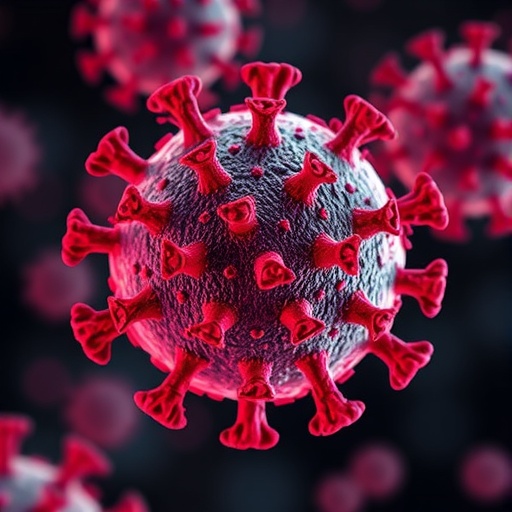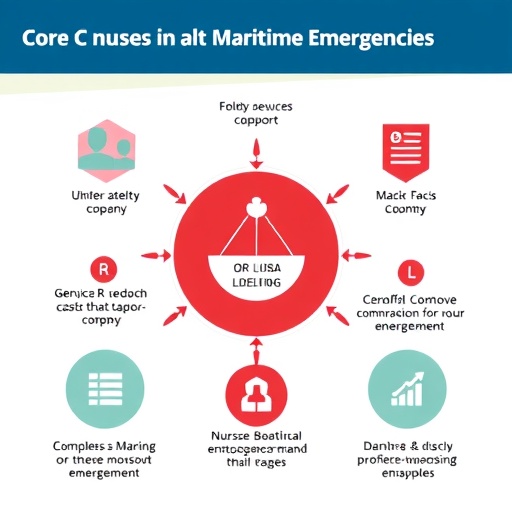In the wake of the COVID-19 pandemic, scientists have gained unprecedented opportunities to study viral dynamics and interactions in human populations. A recent study published in Nature Communications leverages these insights to explore the complex interplay between two common respiratory viruses: respiratory syncytial virus (RSV) and human metapneumovirus (hMPV). Utilizing the pandemic’s disruptions as a natural experiment, researchers have developed novel models that not only unravel the inter-viral relationships but also provide critical forecasts for future respiratory virus interventions.
The study’s transformative approach hinges on analyzing how public health measures designed to curb SARS-CoV-2 transmission inadvertently altered the epidemiology of other respiratory pathogens. RSV and hMPV, both responsible for significant morbidity—particularly among young children, the elderly, and immunocompromised individuals—experienced dramatic shifts in their typical seasonal patterns during the pandemic. This perturbation served as an experimental lens through which the researchers could dissect potential viral interference or facilitation effects that are otherwise difficult to identify under stable epidemiological conditions.
Traditionally, respiratory viruses often co-circulate within the population, leading to overlapping outbreaks that complicate the understanding of their interactions. Prior to COVID-19, RSV and hMPV demonstrated somewhat synchronized seasonal peaks, but their dynamic relationship remained ambiguous. Disentangling whether these viruses compete for the same host niche, facilitate each other’s spread, or simply coexist independent of one another has been an ongoing challenge. The pandemic’s disruption, characterized by strict non-pharmaceutical interventions such as masking, social distancing, and school closures, temporarily suppressed their circulation, creating an atypical epidemiological landscape.
.adsslot_67BRgMiPrx{ width:728px !important; height:90px !important; }
@media (max-width:1199px) { .adsslot_67BRgMiPrx{ width:468px !important; height:60px !important; } }
@media (max-width:767px) { .adsslot_67BRgMiPrx{ width:320px !important; height:50px !important; } }
ADVERTISEMENT
Leveraging this unique disruption, the researchers employed sophisticated mathematical modeling techniques that integrate epidemiological data spanning pre-pandemic, pandemic, and post-pandemic phases. Their models assessed variations in viral transmission intensity, susceptibility within the population, and potential viral interference mediated by immune responses or ecological competition. The findings reveal nuanced interactions: rather than complete competition, RSV and hMPV exhibit a form of asymmetric interference where the presence of one virus can partially inhibit the other’s spread but does not entirely suppress it.
One pivotal insight from the modeling is the identification of temporal shifts in epidemic timing between RSV and hMPV following COVID-19-related interventions. The typical seasonal alignment was disrupted, with some geographical regions observing an out-of-season resurgence of RSV while hMPV transmission lagged or followed distinct temporal patterns. This staggered circulation challenges traditional understanding and suggests that public health interventions targeting one respiratory virus could unintentionally reshape the epidemiology of others.
Furthermore, the study underscores the potential implications for future RSV vaccine and monoclonal antibody deployment strategies. Since RSV vaccines and prophylactics are on the brink of widespread use, understanding how such interventions might ripple through the ecosystem of respiratory viruses is critical. The models predict that RSV-focused interventions could lead to an ecological niche opening favoring hMPV outbreaks, potentially altering overall respiratory disease burden. This highlights the need for a comprehensive surveillance framework and perhaps combined intervention strategies to mitigate unintended consequences.
The research also emphasizes the importance of integrating viral interaction dynamics into public health decision-making. Historical approaches often treated respiratory viruses in isolation, but this study advocates for a paradigm shift recognizing the interconnectedness of viral ecosystems. Aligning vaccination campaigns, surveillance, and clinical management with knowledge of inter-viral relationships could enhance preparedness and response efforts for respiratory illnesses.
Technically, the study’s methodology combined time-series analysis with mechanistic transmission models calibrated against diverse datasets, including clinical hospitalizations, viral test positivity rates, and demographic distributions. This integrated approach allowed fine-grained detection of shifts in viral transmissibility parameters and cross-protection effects mediated by host immunity. The researchers also employed sensitivity analyses to account for uncertainties in reporting biases and healthcare-seeking behaviors during and after the COVID-19 pandemic.
Another notable aspect is the consideration of age-structured transmission dynamics. Since RSV and hMPV disproportionately affect different age groups, incorporating age-based susceptibilities and contact patterns was crucial. The models revealed that shifts in school attendance and daycare openings during the pandemic had differential impacts on RSV and hMPV spread, further complicating the virus-virus interaction landscape.
Importantly, while the COVID-19 pandemic provided the perturbation necessary for this analysis, the study acknowledges limitations tied to unprecedented societal changes. Variations in testing availability, healthcare utilization, and behavioral adaptations introduce confounding variables that the models strive to adjust for but cannot entirely eliminate. Additionally, viral genetic evolution during the study period may have influenced transmissibility, an aspect warranting continuous monitoring.
The findings bear significant relevance as respiratory viruses continue to pose substantial global health threats. With RSV now targeted by new vaccines and long-acting monoclonal antibodies, understanding potential shifts in disease patterns is imperative for optimizing intervention efficacy. This research provides a blueprint for harnessing natural disruptions to decode complex viral interactions and anticipate the ecological consequences of medical interventions.
Beyond RSV and hMPV, the conceptual framework applied here could extend to other respiratory pathogens, including influenza viruses, rhinoviruses, and emerging coronaviruses. Dissecting the intricate network of viral coexistence and competition can enlighten future pandemic preparedness and endemic disease control strategies. As respiratory pathogen landscapes evolve, dynamic modeling incorporating multi-viral interactions will become increasingly indispensable.
Ultimately, this study exemplifies how the extraordinary circumstances of a global pandemic can fuel scientific breakthroughs by providing rare opportunities for real-world natural experiments. By decoding the interplay between RSV and hMPV through the lens of COVID-19 disruptions, researchers have illuminated previously obscured pathways of viral ecology and epidemiology. Their work not only advances virological knowledge but also charts a course for integrative, adaptive public health interventions in an era of complex viral threats.
As the world navigates post-pandemic realities, the insights gained here underscore the necessity of holistic surveillance systems capable of detecting and interpreting multifactorial influences on infectious diseases. Collaborative efforts spanning virology, epidemiology, immunology, and mathematical modeling are vital to translate such knowledge into actionable policies. In this context, how societies manage respiratory virus transmission may be profoundly shaped by the integrated understanding exemplified in this landmark study.
This research serves as a compelling reminder that pathogens do not exist in isolation; their epidemiological fates are intertwined within a shared ecosystem shaped by human behavior, immunity, and the environment. The authors’ innovative use of COVID-19 pandemic-induced perturbations to reveal RSV-hMPV interactions paves the way for a new era of respiratory virus research — one that embraces complexity to forge more effective disease control strategies worldwide.
Subject of Research: Interactions between Respiratory Syncytial Virus (RSV) and Human Metapneumovirus (hMPV) inferred through epidemiological perturbations caused by COVID-19 pandemic interventions.
Article Title: Using COVID-19 pandemic perturbation to model RSV-hMPV interactions and potential implications under RSV interventions.
Article References:
Howerton, E., Williams, T.C., Casalegno, J.S. et al. Using COVID-19 pandemic perturbation to model RSV-hMPV interactions and potential implications under RSV interventions. Nat Commun 16, 7261 (2025). https://doi.org/10.1038/s41467-025-62358-w
Image Credits: AI Generated
Tags: COVID-19 pandemic effectselderly respiratory virus morbidityimmunocompromised individuals and respiratory infectionsNature Communications study on virusespediatric respiratory illnessespublic health measures impact on virusesrespiratory pathogen co-circulation analysisrespiratory virus epidemiology insightsRSV and hMPV interaction studyseasonal patterns of respiratory virusesviral dynamics in respiratory infectionsviral interference and facilitation





